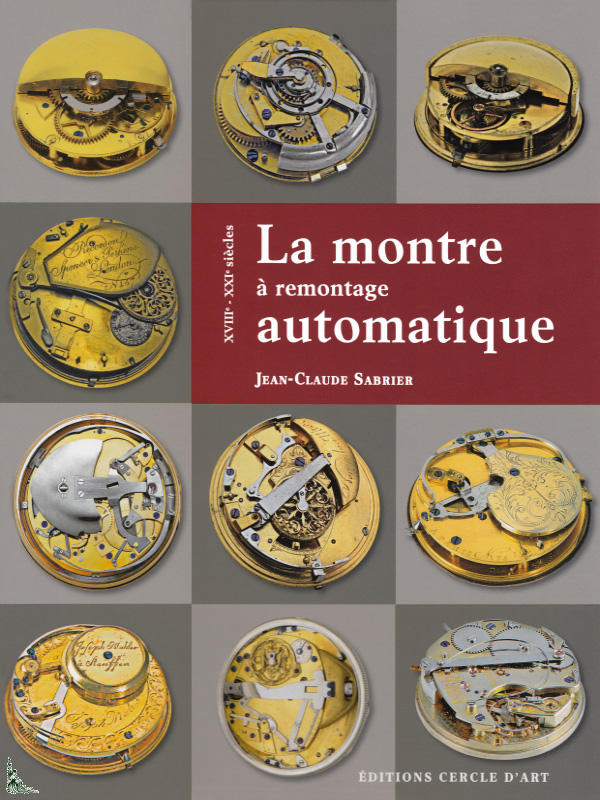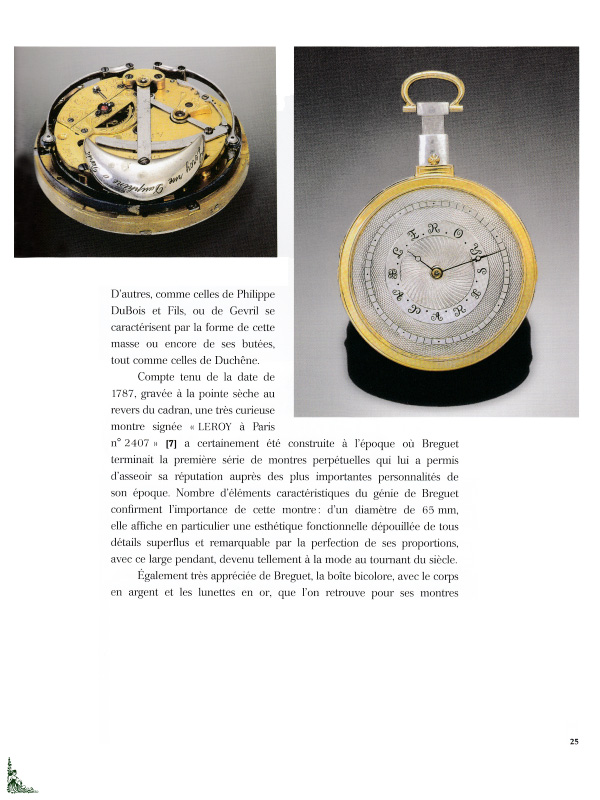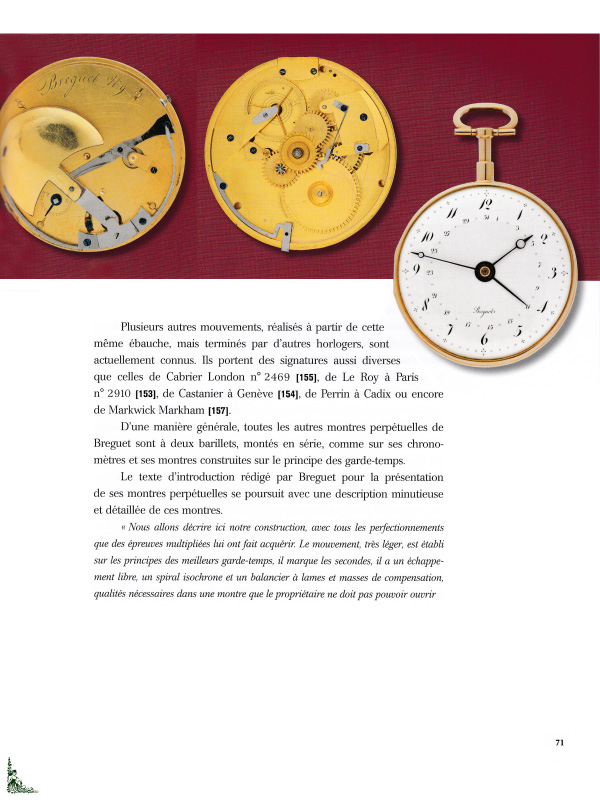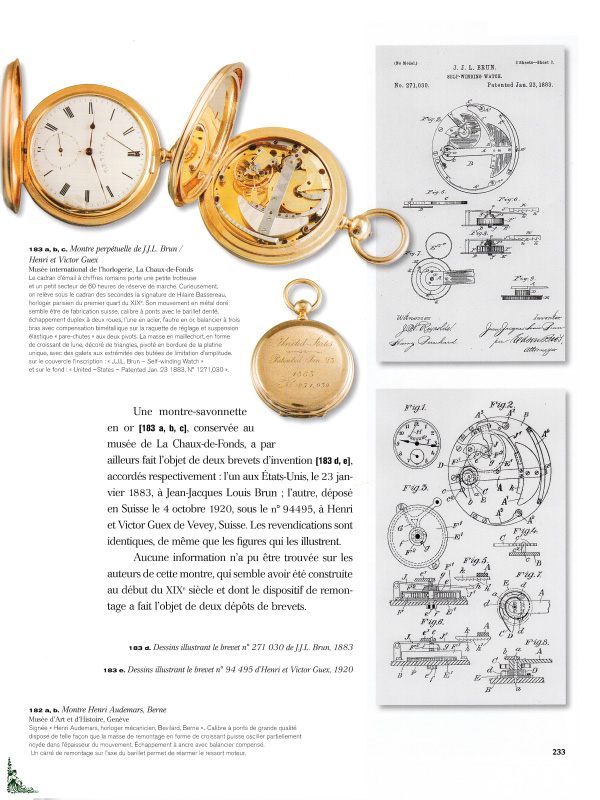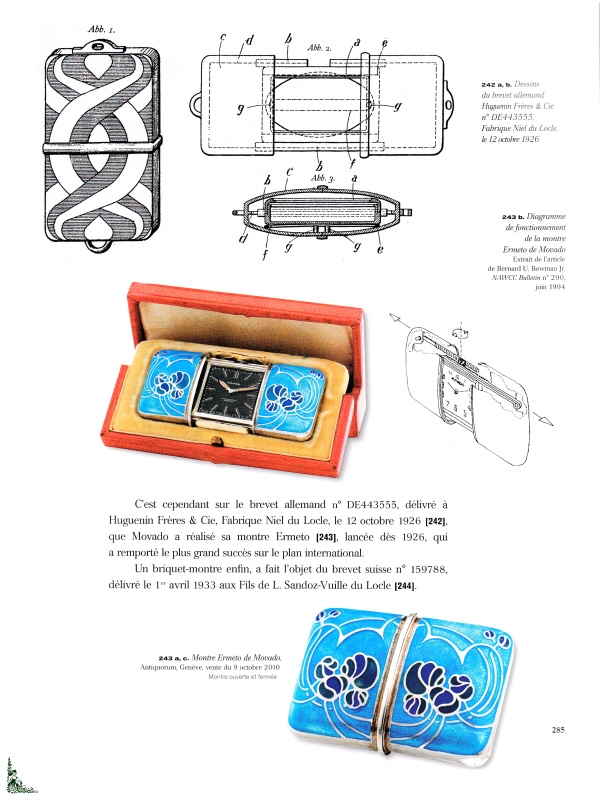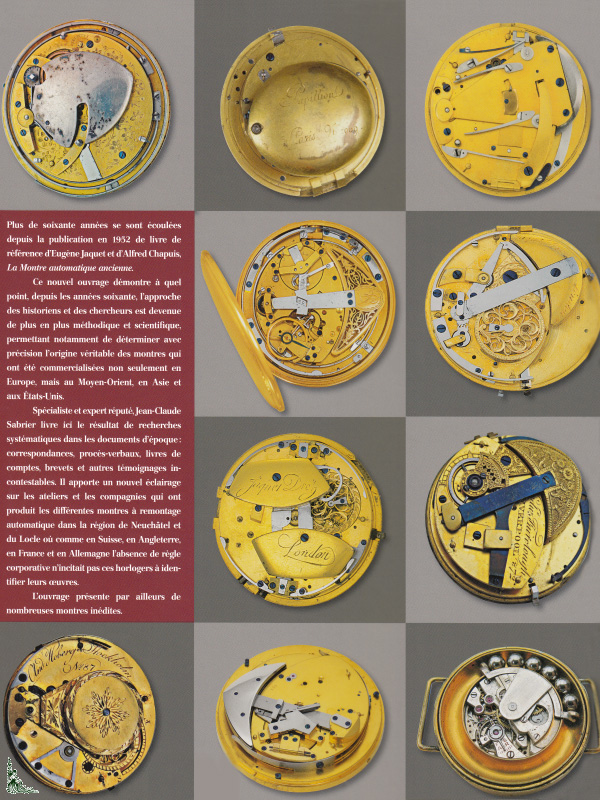The self-winding watch (18th - 21st centuries)
Informazioni sul libro
| Autore : | Jean-Claude Sabrier |
| Editore : | Cercle d'Art (2011) |
| Legatura : | Hardcover (308 full color pages) 9-½ inches x 12 inches |
| Lingua : | French |
| ISBN : | 978-2-7022-0932-5 |
| EAN : | 9782702209325 |
Descrizione
The self-winding watch (18th - 21st centuries), by J.C. Sabrier, Ed. Cercle d'Art, 9-½ inches x 12 inches ( 24 cm x 30.5 cm ), hardcover book with 308 full color pages
This hardcover book with 308 full color pages traces the history of self-winding watches from its origins.
Like most inventions, even the most fundamental ones, it is hardly possible to determine the inventor of those whose objectives, as well as the means to achieve them, cannot be defined with precision, any more than it is possible to determine the precise date of these inventions. By definition, a self-winding watch is a timepiece that can function, without the need to wind it manually.
Since the watch has existed, many watchmakers have imagined different processes for maintaining the movement of a watch, without the conscious intervention of its owner. It is certain that at all times, man has fantasized about the existence of "perpetual motion"
Contents:
- Preface by Jean-Claude Biver
- Origins and developments of the invention
- Abraham Louis Perrelet (1729-1826)
- First evolution
- Louis Recordon (1728-1824)
- Abraham Louis Breguet and his followers
- The Jaquet Droz galaxy
- Production is organized in Switzerland
- Production is organized in France
- Production is organized in Germany
- Modern self-winding watches
- Self-winding wristwatches
- New developments in self-winding watches
- Conclusion
- Index
The French texts are written by Jean-Claude Sabrier.
 Description française
Description française
La montre à remontage automatique (XVIIIe - XXIe siècles)
Détails du livre
| Auteur : | Jean-Claude Sabrier |
| Éditeur : | Cercle d'Art (2011) |
| Reliure : | Relié (308 pages couleurs) 24 cm x 30.5 cm ( 9-½ inches x 12 inches ) |
| Langue(s) : | Français |
| ISBN : | 978-2-7022-0932-5 |
| EAN : | 9782702209325 |
Description
La montre à remontage automatique (XVIIIe - XXIe siècles), de J.C. Sabrier, Ed. Cercle d'Art, 24 cm x 30.5 cm, relié avec 308 pages couleurs
Cet ouvrage relié de 308 pages couleurs retrace l'histoire des montres à remontage automatique depuis ses origines.
Comme la plupart des inventions, même les plus fondamentales, il n'est guère possible de déterminer l'inventeur de celles, dont les objectifs, comme les moyens pour les atteindre, ne peuvent être définies avec précision, pas plus qu'il n'est possible de déterminer la date précise de ces inventions. Par définition, une montre à remontage automatique est un garde-temps qui peut fonctionner, sans qu'il soit nécessaire de le remonter manuellement.
Depuis que la montre existe, de très nombreux horlogers ont imaginé différents procédés permettant d'entretenir le mouvement d'une montre, sans l'intervention consciente de son propriétaire. Il est certain qu'à toutes les époques, l'homme a fantasmé sur l'existence du « mouvement perpétuel »
Principaux chapitres de l'ouvrage :
- Préface de Jean-Claude Biver
- Origines et développements de l'invention
- Abraham Louis Perrelet (1729-1826)
- Première évolution
- Louis Recordon (1728-1824)
- Abraham Louis Breguet et ses élèves
- La galaxie Jaquet Droz
- La production s'organise en Suisse
- La production s'organise en France
- La production s'organise en Allemagne
- Les montres modernes à remontage automatique
- Les montres bracelets à remontage automatique
- Les nouveaux développements des montres à remontage automatique
- Conclusion
- Index
Les textes en Français sont de Jean-Claude Sabrier.


